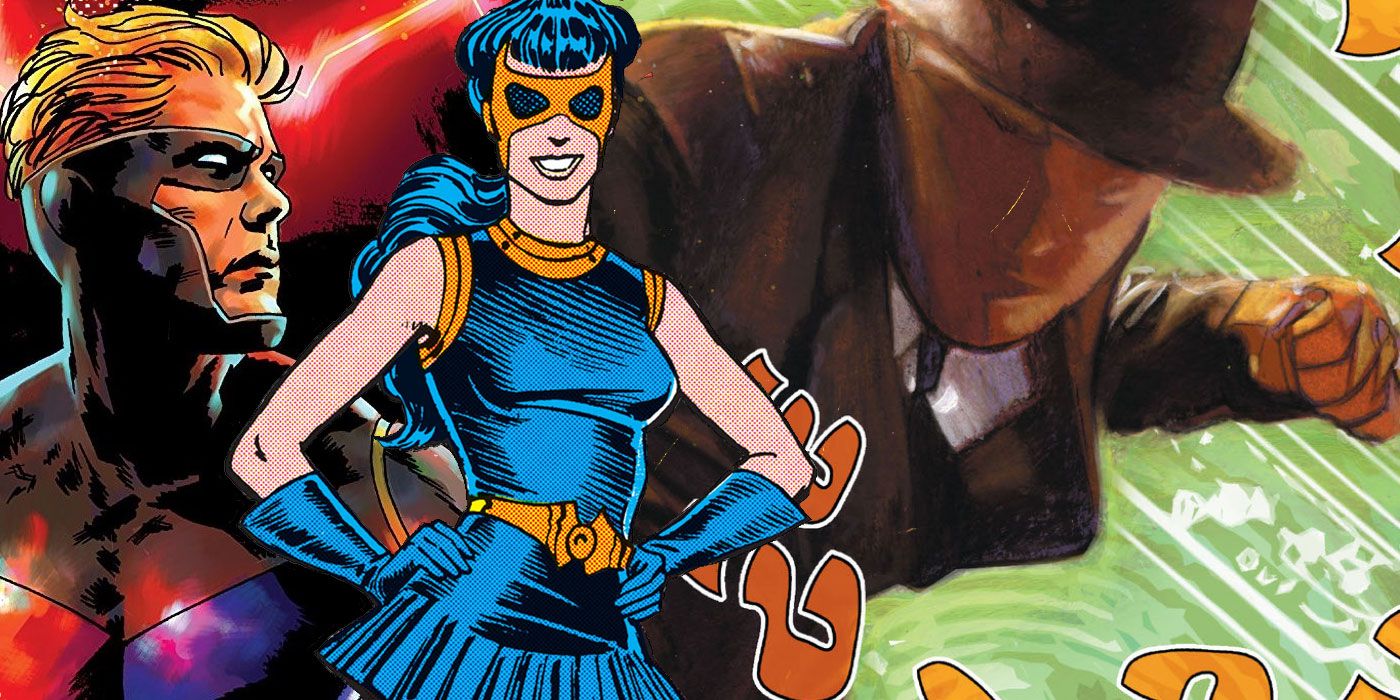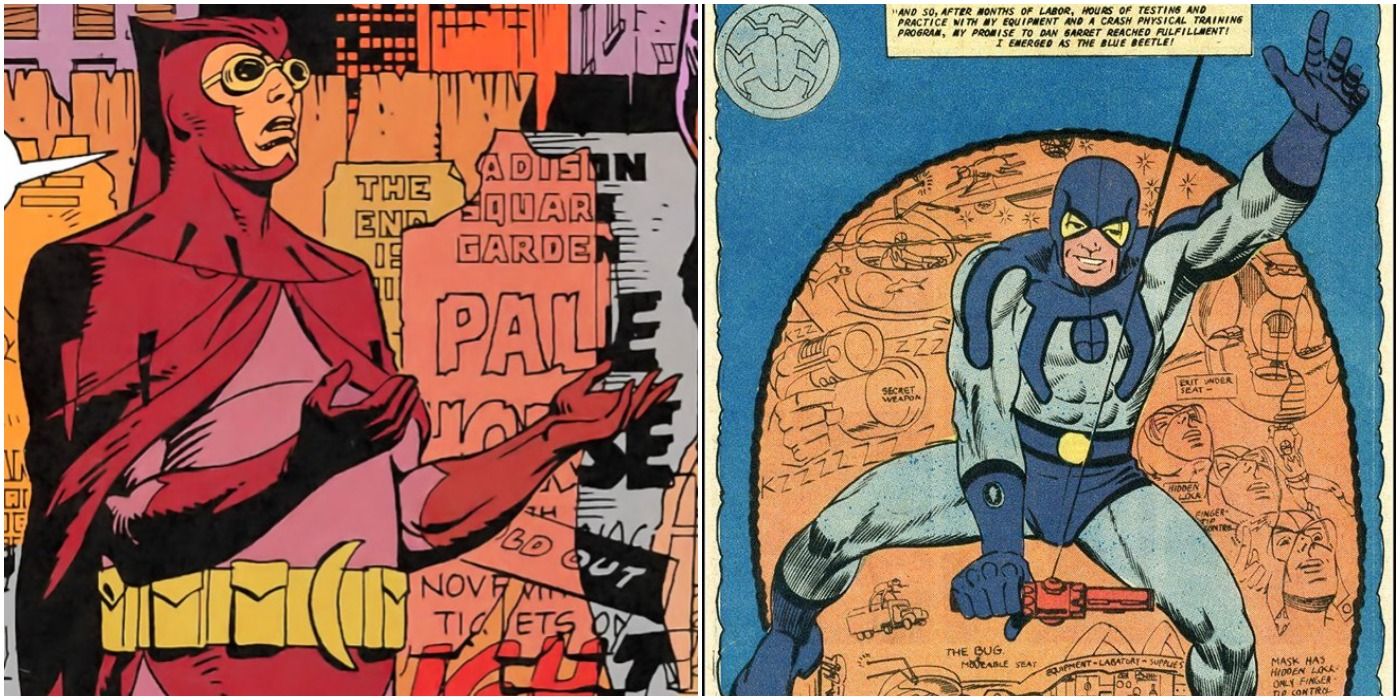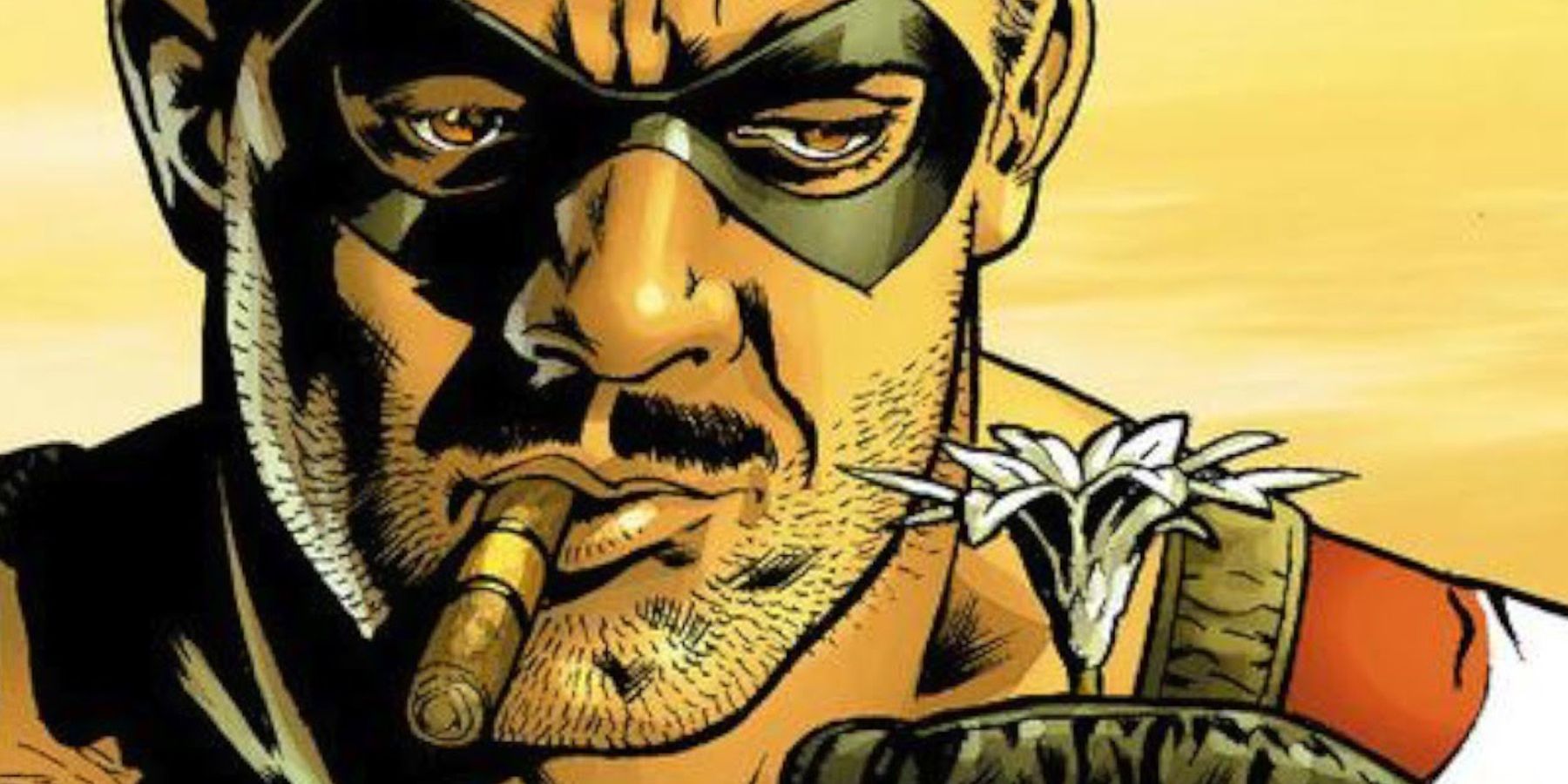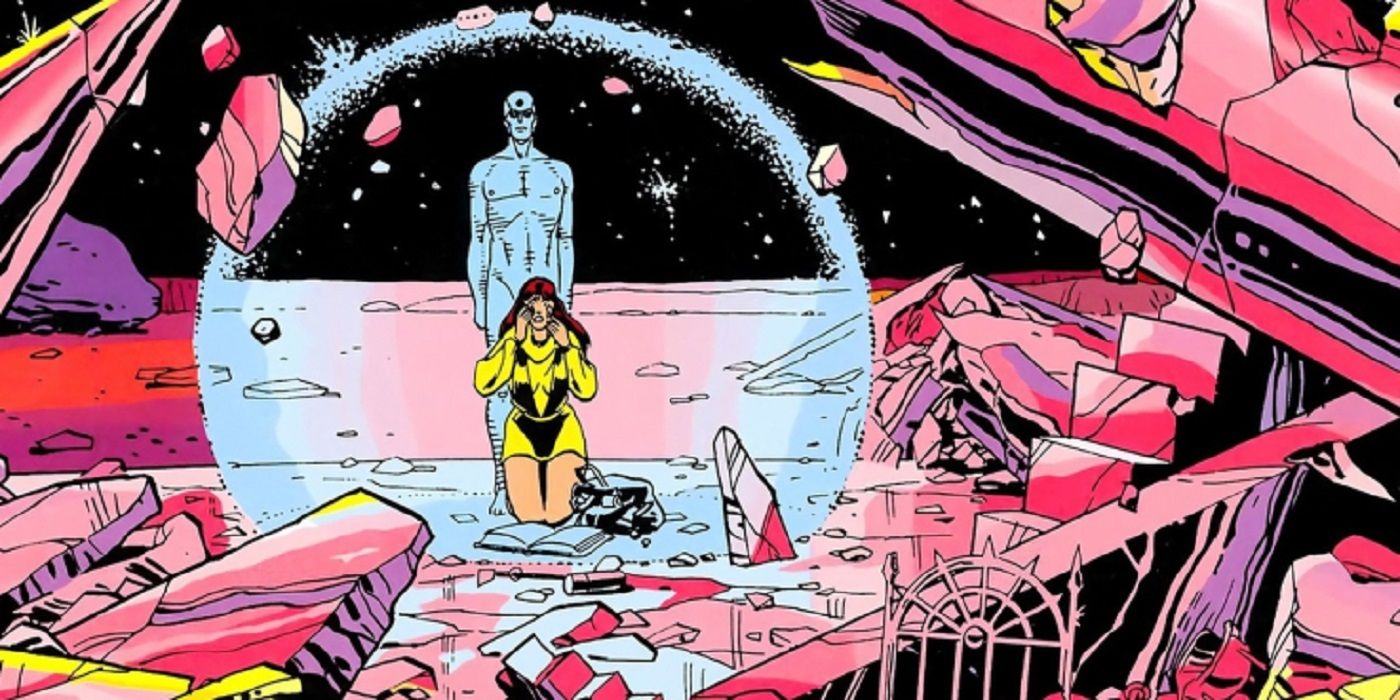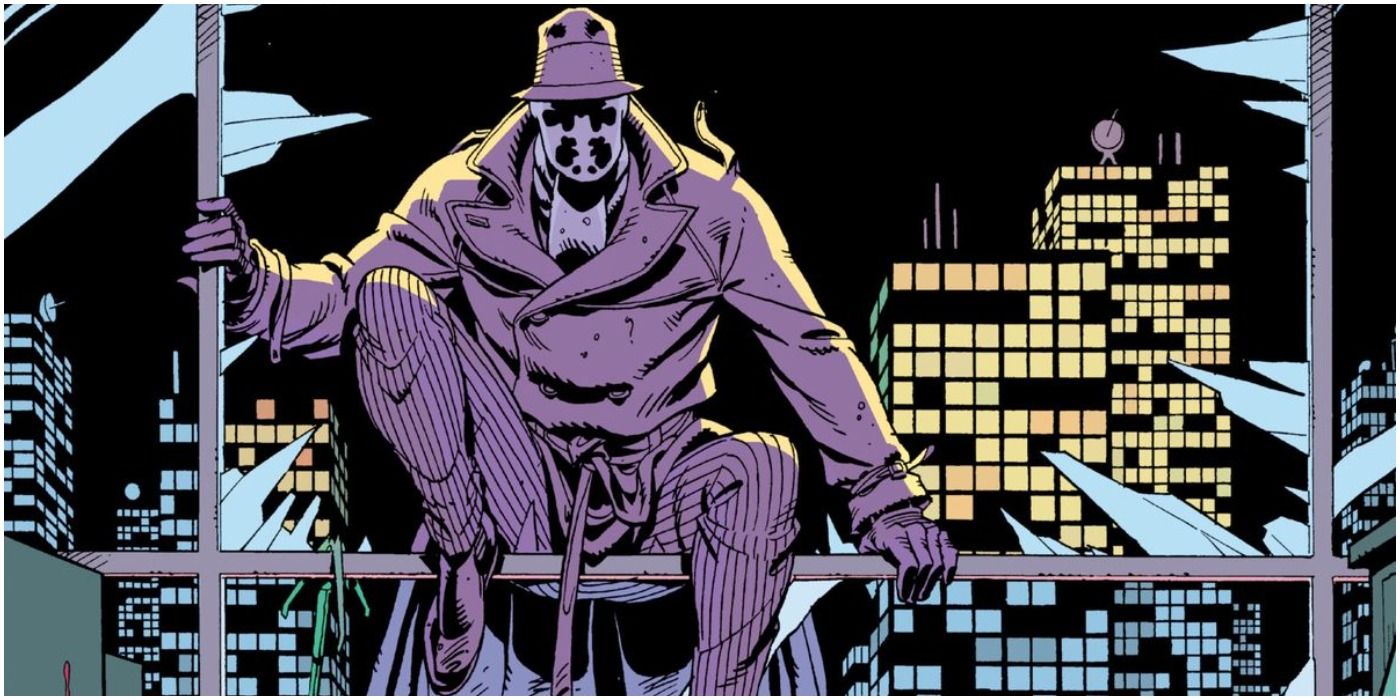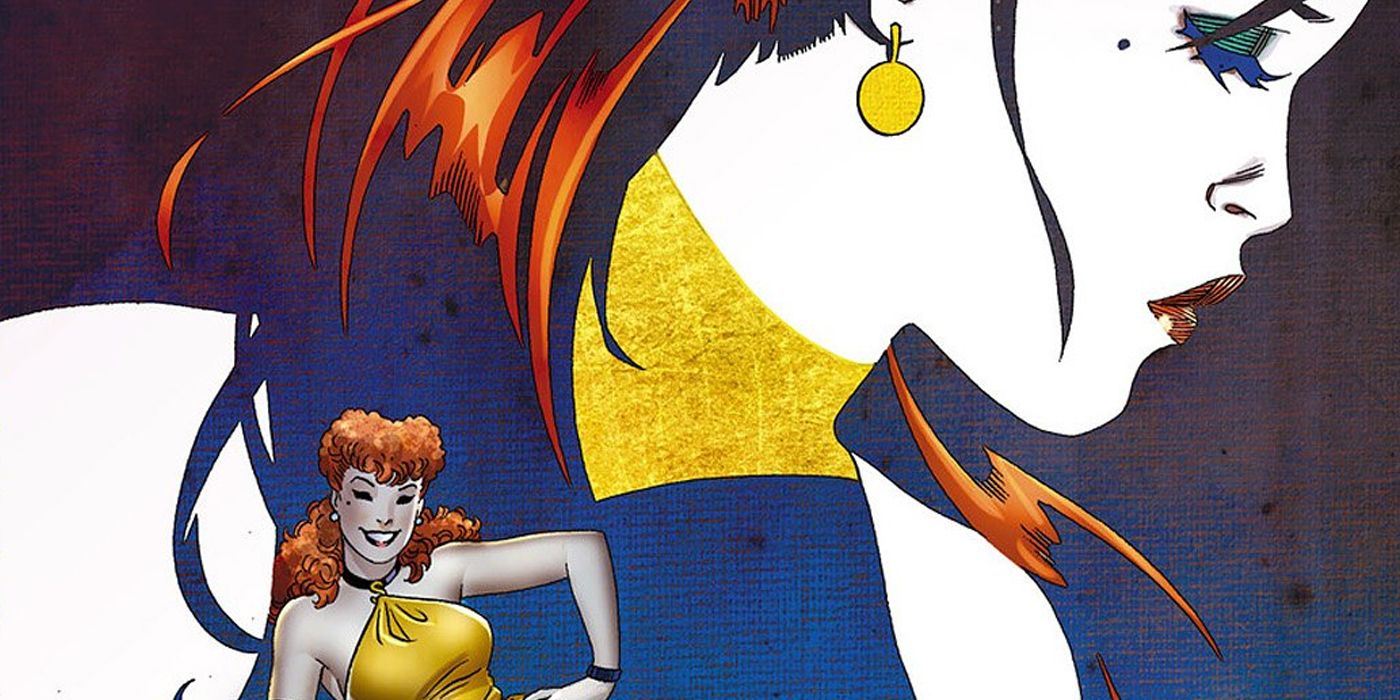Watchmen is easily one of if not the most iconic comic books ever published, with the cynical superhero deconstruction continuing to cast a long, dark shadow across the industry. Though it was published by DC Comics, it was not connected, at least at the time, connected to the familiar heroes of the DC Universe. That doesn't mean it didn't take inspiration from DC's stable differently.
The heroes of Watchmen were initially going to be the characters from Charlton Comics that DC had at the time recently acquired. This was changed to making original creations, but the heroes that influenced them are still fairly obvious in their DNA. Alan Moore and Dave Gibbons' characters are now coming back through DC's multiverse, so here's a look at how Blue Beetle and The Question became Nite Owl and Rorschach.
Watchmen's Nite Owl Was Based On Two Different Versions of Blue Beetle
Watchmen features two heroes named Nite Owl, with the identity being a legacy kept by a family friend of the original. The first Nite Owl, Hollis. T Mason, debuts in his costumed avian persona in the 1930s. In fact, his heroism is inspired by reading a comic book featuring Superman. After retiring as a member of the Minutemen, Mason bequeaths the Nite Owl persona to Daniel Dreiberg. Dreiberg would combine two-fisted justice with technological know-how, making him even more successful against crime on the streets.
The two Nite Owls were obviously based on Charlton Comics' Blue Beetle. The first Blue Beetle was Charlton's version of the Golden Age character of the same name whose true identity was Dan Garrett. His successor was Ted Kord, a rich businessman who had martial arts skills and fancy gadgets. Nite Owl's "Owlship" was inspired by Blue Beetle's "Bug," making the connection even greater. There's also a connection to other heroes, with the first Nite Owl's costume being based on The Phantom (in the real-world creative process, at least), whereas Dreiberg's was inspired by Batman.
The Comedian Is a More Nihilistic Peacemaker
Peacemaker is now more prominent than ever thanks to the film The Suicide Squad and the HBO Max Peacemaker TV series. Beforehand, however, he was perhaps most remembered as the inspiration for The Comedian, who also had some slight elements of Nick Fury and even the patriotic Captain America. A vigilante turned war hero, he comes to see the world in an incredibly cynical fashion. His later star-spangled costume is somewhat similar to Peacemaker's own, with the gimp mask he eventually wears being analogous to the Peacemaker's strange helmet.
These are actually about the only real similarities between Peacemaker and The Comedian as far as their personalities went, with the original Peacemaker actually being a pacifist forced to fight against war and crime. This makes The Comedian one of the looser "adaptations" in Watchmen.
Dr. Manhattan Is Charlton's Captain Atom - Without Clothing
The atomic Dr. Manhattan is obviously the Captain Atom stand-in, though likely not the Captain Atom that most comic fans know. The original Charlton Captain Atom was named Allen Adam, whereas the later DC version was Nathaniel Christopher Adam. His powers were quite similar to those that Dr. Manhattan would wield, but his design certainly wasn't. The Charlton Comics Captain Atom wore a yellow and red costume and had a normal human appearance.
Dr. Manhattan on the other hand had glowing blue skin and would eventually feel free enough to fly around completely naked. The post-Crisis DC version of Captain Atom would come full circle with this inspiration - twice. The immediate redesign of Nathaniel Christopher Atom gave him a glowing silver "dilustel" body, with the metallic skin covering him essentially making him naked. The New 52 reboot would even make his powers closer to those of Dr. Manhattan, showing how the teacher had become the student.
Rorschach Is an Even More "Conservative" Version of The Question
Though the late Denny O'Neil would later turn him into a sort of Zen master detective, The Question was initially an Objectivist with Ayn Rand-inspired ideas like those of his creator Steve Ditko. He saw the world in stark black and white, believing that his absolute morality was the only true heroism. Rorschach is very similar, despising most of the world at large for what he sees as its illogical amorality. Rorschach's mask not only reflects the titular test of the same name but also the black-and-white nature through which he sees the world.
Said mask is similar to The Question's own lack of facial features via his "pseudoderm" mask. DC would somewhat homage to these similarities in Denny O'Neil's aforementioned run, with Vic Sage/The Question actually reading a copy of Watchmen. He briefly looks up to and idolizes Rorschach's methods before being beaten up, thereafter stating that "Rorschach sucks."
Silk Spectre and Ozymandias Were Amalgam Characters In Watchmen
The closest Charlton Comics counterpart to Ozymandias would be Peter Cannon, Thunderbolt. Thunderbolt possessed an almost spiritual level of mastery over his body, becoming the strongest, fastest and most resilient that a human being ever could. Ozymandias did much the same, even catching a bullet in the climax of Watchmen. Beyond this, however, their connection is generally much more understated than those of other "heroes" in the book. Likewise, Silk Spectre combined elements of various female superheroes from the Golden Age, with the original Silk Spectre's almost pinup nature making her a satire and deconstruction of how heroines were treated in those days.
She was initially going to be Nightshade, though Alan Moore wasn't her biggest fan. When the story changed and called for original characters instead, Moore took inspiration from the Phantom Lady and the blonde bombshell, Black Canary. She resembles the former with her yellow costume, all while being a legacy carried by a mother and daughter like Black Canary. Despite not truly being based on a Charlton character, Silk Spectre most embodies the element of Golden Age legacy in Watchmen, hearkening back to a time when a man or woman needed merely their two fists to slam and bang their way to winning the day.

